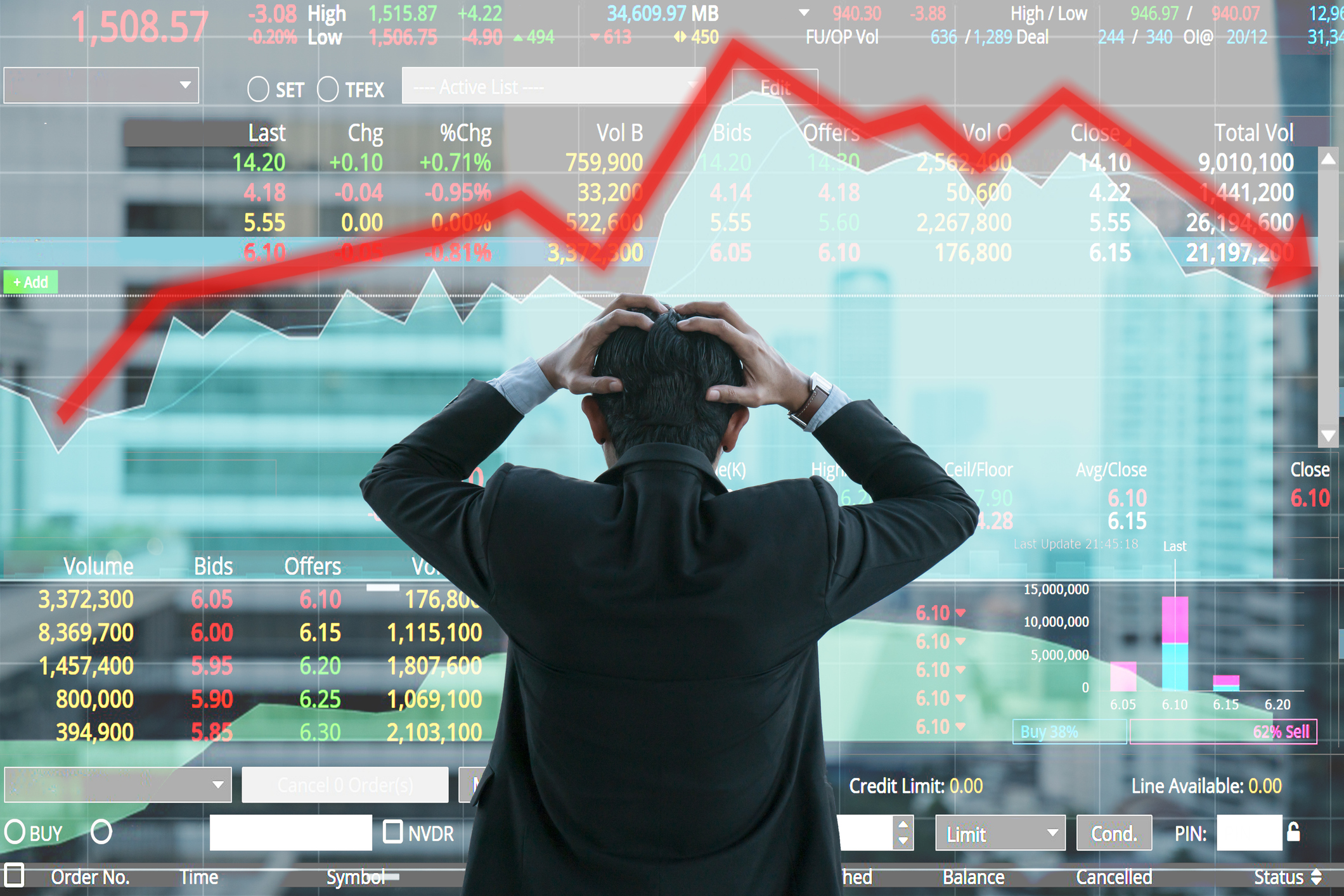
Global stocks are swimming in red ink Monday, building on a selloff that started the week prior amid concerns the U.S. Federal Reserve is waiting too long to cut interest rates.
But this isn't the only reason behind the global stock market slump. While technical issues with some brokers could be magnifying the anxiety across Wall Street, they are separate from the factors sparking the selloff. Here we'll take a closer look at what those are and what investors can do to protect their portfolios.
The Fed
In last week's July policy meeting, the Federal Reserve kept its federal funds rate at a 23-year high, but cited improvements in inflation. In his subsequent press conference, Fed Chair Jerome Powell suggested a September rate cut could be on the table if inflation continues to ease back.
However, following the meeting, disappointing manufacturing data and a softer-than-expected July jobs report sparked concern that the Fed is behind the ball on rate cuts and that a recession could be looming.
Indeed, over the weekend, Goldman Sachs economists increased the odds of a recession occurring over the next 12 months to 25% from 15%.
Despite the increased probability, the group admits that recession risks are "limited not only because the data look fine overall and we do not see major financial imbalances, but also because – as Chair Powell emphasized last week – the Fed has 525 basis points of room to cut the funds rate and would surely be quick to support the economy if necessary." One basis point = 0.01%.
Japan
Japanese equities are leading the global selloff, with the Nikkei 225 slumping 12.4% overnight. Other sharp moves lower were seen in South Korea (-8.8%), London (-2.2%) and Germany (-2.2%).
While some are citing the Bank of Japan's recent increases to its key borrowing rate as a catalyst for the volatility, others are pointing to the collapse of the carry trade on the yen. What's a carry trade?
"[O]ver many years, investors have been borrowing in yen to invest in higher-yielding assets," writes the Schwab Center for Financial Research team in emailed commentary. "With interest rates rising [and] the yen moving higher, those trades are no longer profitable, and traders are unwinding them. The unwinding of leveraged trades in risk assets is taking on a life of its own because the size of the trades is large."
Buffett
Not helping matters was news Warren Buffett's Berkshire Hathaway (BRK.B) slashed its stake in Apple (AAPL).
Buffett started trimming his stake in Apple – the biggest holding in the Berkshire Hathaway equity portfolio – in Q1, due to tax reasons. But a financial statement released over the weekend revealed Berkshire's stake in Apple was valued at $84.2 billion as of June 30. By contrast, Buffett's position in AAPL had a market value of $135.4 billion at the end of Q1.
The unloading of Apple continues a recent trend for Buffett, whose team has been selling Bank of America (BAC) shares in recent weeks. This has helped boost Berkshire's cash position, which stood at $276.9 billion as of June 30.
What can investors do?
There's a saying on Wall Street that stocks are the only thing people don't want to buy when they're on sale. Thus, there is only one rule to follow when stocks are selling off sharply: don't panic. Investing in the market is a marathon and not a sprint.
As we've said time and time again, wealth is built over decades, not days. As just one example, those who invested $1,000 in Nvidia (NVDA) would be sitting on tremendous returns today. And even though NVDA shares are down more than 20% in the past week, the chipmaker remains 123% higher on a 12-month basis.
Remember that the idea is to buy low. Stocks are cheaper today than they were yesterday. They may get cheaper tomorrow, but the long-term trend has always been up and to the right. That's why dollar-cost averaging works.
More importantly, market corrections are normal. "This past week of stock market volatility is overdue, as we are in the early stages of this bull market, which involve sharp rallies, like we saw so far this year, that are then punctured by sharp corrections, like we are now experiencing," says James Demmert, chief investment officer at Main Street Research. "These corrections are healthy and resets and normalizes stock prices and sets the market up for another run to new highs."
Be that as it may, it's abundantly understandable if investors want to de-risk their portfolios to some degree – as long as they understand that they will also forgo some upside once the market regains its footing.
One way to protect portfolios against market volatility is to hedge with options – particularly put options – which can create a buffer against potential downside. But buyer beware. With the Cboe Volatility Index (VIX) hitting its highest level since the onset of the pandemic, the cost to buy short-term options insurance is fairly high at the moment.
As for equities, investors can seek out traditional safety plays. These can include the best dividend stocks, which "tend to hold up better in market drawdowns," writes Dan Burrows, senior investing writer at Kiplinger.com.
Additionally, investors can seek out low-volatility stocks that "can not only help reduce losses in a downturn," writes Kiplinger contributor Kyle Woodley, but they can also prevent "you from panic selling."
To spread risk out over a basket of stocks vs individual equities, investors can also seek out the best dividend growth ETFs or low-volatility ETFs.







